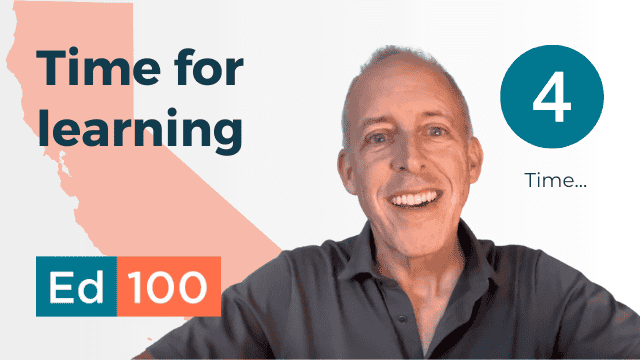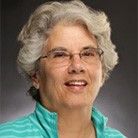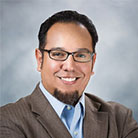
It’s 3:00 in the afternoon on a typical weekday. School is out. Where do kids go next and what do they do?
In This Lesson

What do students do after school?
What is expanded learning?
How can my school get money for an after-school program?
Do after-school programs help students?
Is California a leader in expanded learning?
How are after-school programs funded?
Are after-school programs vulnerable?
▶ Watch the video summary
★ Discussion Guide
In years long past, after-school time was seen as beyond the scope of concern for schools. Many teachers expected students to do homework, but that was usually it.
Today, many communities rely on their school far beyond the "normal" school day. Families need safe, affordable options to care for their kids, and it makes sense that school facilities should be part of the solution. It also makes sense for after-school programs to connect with in-school programs.
What is Expanded Learning?
Expanded Learning refers to organized learning that takes place outside normal school hours. After-school programs (insiders refer to them as expanded learning programs or out of school time programs — OST for short) benefit students, families, and communities. Research shows that these programs (especially career-technical programs) can improve students’ attendance, boost social-emotional development, and support college readiness. They can also help to reduce achievement gaps.
The golden rule applies: Whoever's got the gold…
School communities don't automatically have access to expanded learning offerings for their kids. Programs have to be developed and implemented locally, which doesn't necessarily happen. Local leaders cobble together temporary programs in ways that reflect local needs, local leadership, local partnerships, and of course, local funding. The programs vary a lot, even in matters as basic as their purpose.
Should after-school programs serve as a continuation of the school day? (Sometimes.) Should they provide the space and technology needed for homework? (Sometimes.) Should they provide educational enrichment activities? (Sometimes.) Should they be centers of athletics, performing arts, and career awareness? (Sometimes.) Should they just be a safe, supervised place for kids to have fun and relax after the school day? Or a program to prevent kids from gathering in uncontrolled ways? (You get the picture.)
Perhaps most critically: who is supposed to pay for these opportunities? Because, as always, the golden rule applies: Whoever's got the gold makes the rules.
Federal, State and Local all chip in. Sometimes.
Money for after-school learning programs is complicated and inconsistent from year to year. Not every school has an after-school solution for families. Learning centers like Boys & Girls Clubs and YMCAs are an important part of the mix, for example. Each expanded learning program is local, subsisting year to year on grants foraged from a mix of sources. Some grants come through municipal budgets (which are separate from school budgets). Grants from state and federal sources have been important, too, especially in times of crisis like the COVID-19 pandemic.
California's leadership: California has earned a reputation for leadership in expanded learning. In 2002, California voters passed an initiative that made funding of after-school programs a constitutional obligation. The measure (then known as Proposition 49, but better described by its permanant name, the After School Education and Safety program, or ASES) passed with active support from future governor Arnold Schwarzenegger, who at the time was a private citizen with political ambitions. The ASES program was opposed by good-government advocates including the State Legislative Analyst. Campaigning for this popular measure boosted Schwarzenegger's profile and led to his election as governor of California in a recall election.
This dive into political history might seem a digression, but it's in the service an important point: after-school programs are popular but messy — and have always been so. From the beginning, California's after-school programs were sculpted out of metaphorical chicken wire and bubble gum. Even so, according to a 2020 ranking by the National Afterschool Alliance, at the outset of the Pandemic, California had stronger after-school programs in more schools than anywhere in America other than Washington, D.C.
California's expanded learning programs grew over time, with new programs and new program names, especially the Expanded Learning Opportunities Program (variously abbreviated ELO, ELOP or ELO-P.) Programs funded by grants with this name this name started in 2021-22 and have distribution requirements that mimic the state's main funding equity formula, LCFF. Grant sizes vary to provide additional funds in higher-need communities.
Federal support for expanded learning: At about the same time Californians voted to create ASES, the federal government created the 21st Century Community Learning Centers program for grades K-12. Like ASES, this program awards money based on grant applications that emphasize support for lower-income communities. Federal grants for after school programs are awarded on a formula basis through the 21st Century Community Learning Centers program (21CCLC). In each year from fiscal 2020 through 2023, California after school organizations were awarded a total of about $150 million, which in context isn't very much.
In 2020, there was a widespread expectation that the Pandemic would shred the economy. Temporary federal funding prevented that from happening, and after school programs were part of the story. With an eye to a future when Pandemic-related funding would end, the state and most school districts looked for ways to direct emergency funds toward investments that could be made on a non-permanent basis. Expanded learning programs were a good fit for this spending because they operate year-to-year and place-to-place anyway.
Nationally, federal funds (ARP ESSER) grew to contribute at least $5B to after-school and summer programs through enrichment grants, according to a 2023 federal report.
Expanded learning programs are grant-based
Expanded learning programs vary a lot and operate quite independently. This approach involves a lot of paperwork that demands expertise and a taste for boundless boredom. Grant applications for them are exactly the kind of prose that inspires people to wonder whether artificial intelligence is good enough yet. In 2023, reviewers were paid a stipend of $75 to read and review each application. (If this sounds like your kind of fun, by all means please apply.)
Expanded learning programs require adults to operate. In wealthy neighborhoods, families pay for private after-school programs, tutors, athletics, and more. Working-class families make do with solutions that require fewer paid adults. To gather some insights about the overall effectiveness of expanded learning programs, in 2017 the Wallace Foundation commissioned research about them. One key finding is that research about these programs tends to miss the point:
"For instance, a key benefit of after-school programs is providing experiences to youth that they may otherwise not have, building human and social capital, and helping to close the opportunity gap. However, no evaluation we reviewed explicitly measured these outcomes or described the quality and nature of those experiences. This absence is problematic if field practitioners believe experiences matter for youth development and are something OST [Out of School Time] providers value."
Expanded learning programs in California are sufficiently complex that in 2022 the California Senate Education committee asked the California Legislative Analyst (LAO) to compare and contrast them. The site of the California Department of Education has a huge page full of answers to frequently asked questions. Yes, this stuff is complicated.
Are after-school programs vulnerable?
The short answer is yes. After-school programs are popular, but they depend on grant programs that are designed to end. They don't have a powerful advocacy organization. In a downturn, grant programs are easy to cut, which is part of why they are relatively easy to fund in good budget times. Even in rising budgets, funding for expanded learning programs routinely fails to keep pace with rising staff costs.
With that said, California's legislature funded the ELOP program as part of the state's Proposition 98 budget, which may give it a degree of protection. Time will tell.
Are after-school programs a good use of funds?
There is evidence that after-school programs, like summer programs, can have significant positive economic effects. How positive? RAND Corporation took on this question in a major efficacy study of after-school programs and summer programs. Suggestions for program design were documented in an enormous report titled “Hours of Opportunity.”
No single entity is responsible for providing out-of-school-time learning, so coordinating among programs — even for the purpose of measurement — can be a challenge. During the Pandemic, districts and nonprofits did their best, in cooperation with the California Afterschool Network (CAN).
The next lesson turns to the question of whether it matters when kids miss school.
This lesson was updated January 2024.
CHAPTER 4:
Spending Time...
-
Spending Time...
Overview of Chapter 4 -
Preschool and Kindergarten
Yes, Early Childhood Education Matters -
Class Size
How Big Should Classes Be? -
School Hours
Is There Enough Time To Learn? -
Time Management in School
Spending Time Well -
Tutoring
When Kids Need More Time and Attention -
Summer School
Time to Learn, or Time to Forget? -
After School Learning
Extending the School Day -
Attendance
Don't Miss School!
Related
- There are no related lessons.
Sharing is caring!
Password Reset
Search all lesson and blog content here.
Login with Email
We will send your Login Link to your email
address. Click on the link and you will be
logged into Ed100. No more passwords to
remember!















Questions & Comments
To comment or reply, please sign in .
Carol Kocivar January 28, 2023 at 10:10 pm
Existing afterschool programs, through the After School Education and Safety (ASES) and 21st Century Community Learning Centers (21st CCLC) programs, were left out of the Governor’s proposed 8.13% COLA for the Local Control Funding Formula, child care, and nearly all other educational categoricals.
Some ASES and 21st CCLC programs do not receive ELO-P funding and need more than $10.18 per student per day from the state in order to run quality programming and hire the workforce they need.
Research shows that a quality afterschool program costs between $14.40 and $40.95 per student per day (depending on the region) (1).
https://ca3advocacy.com/23-24budget-proposal?mc_cid=2251d1653f&mc_eid=be35d24c15
Carol Kocivar August 3, 2022 at 9:20 pm
The 2022-23 state budget provides $3 billion to the Expanded Learning Opportunities Program, increasing the total on going investment to $4 billion. Schools will be required to offer expanded learning opportunities to all
low-income students, English language learners, and youth in foster care. Local educational agencies with the highest concentrations of these students will be required to offer expanded learning opportunities to all elementary students. The Budget continues to assume that full fiscal implementation of the program will take place by 2025-26.
Carol Kocivar June 14, 2022 at 12:30 pm
https://lao.ca.gov/handouts/education/2022/Overview-of-Child-Care-and-Expanded-Learning-Programs-for-School-Age-Children-030222.pdf
[email protected] Madrigal July 2, 2020 at 9:33 am
Susannah Baxendale January 17, 2019 at 1:02 pm
Brenda Etterbeek June 29, 2019 at 1:46 pm
Carol Kocivar June 27, 2018 at 4:24 pm
The Center for American Progress analyzed data from the Afterschool Alliance’s America After 3PM survey. This analysis estimates that the average family will spend more than $3,000 on summer programs for two children, representing 20 percent of a typical family’s income for the entire summer.
Carol Kocivar October 27, 2016 at 4:17 pm
A good read on changing needs:
"Most Parents Work 9 to 5. Why Do Most Schools Still End Around 3?"
http://www.slate.com/blogs/xx_factor/2016/10/14/most_parents_work_9_to_5_why_do_most_schools_still_end_around_3.html
Carol Kocivar April 16, 2016 at 12:28 pm
California’s After School Education and Safety (ASES) program supports over 4,000 elementary and middle schools serving more than 400,000 students daily.
" While the costs, demands, and expectations of ASES programs have consistently increased, the funding has remained stagnant for a decade." The report found that "nearly 30% of ASES-funded respondents reported that they are very likely to close their programs without an increase to the ASES daily rate in the next two years."
Find out more...http://partnerforchildren.org/wp-content/uploads/2016/04/ASES-Daily-Rate-Survey-Memo-Year-2-Final.pdf
Carol Kocivar - Ed100 October 25, 2014 at 2:13 pm
http://afterschoolalliance.org/AA3PM/detail.html#s/CA/demand/p_of_children_in_programs_2014